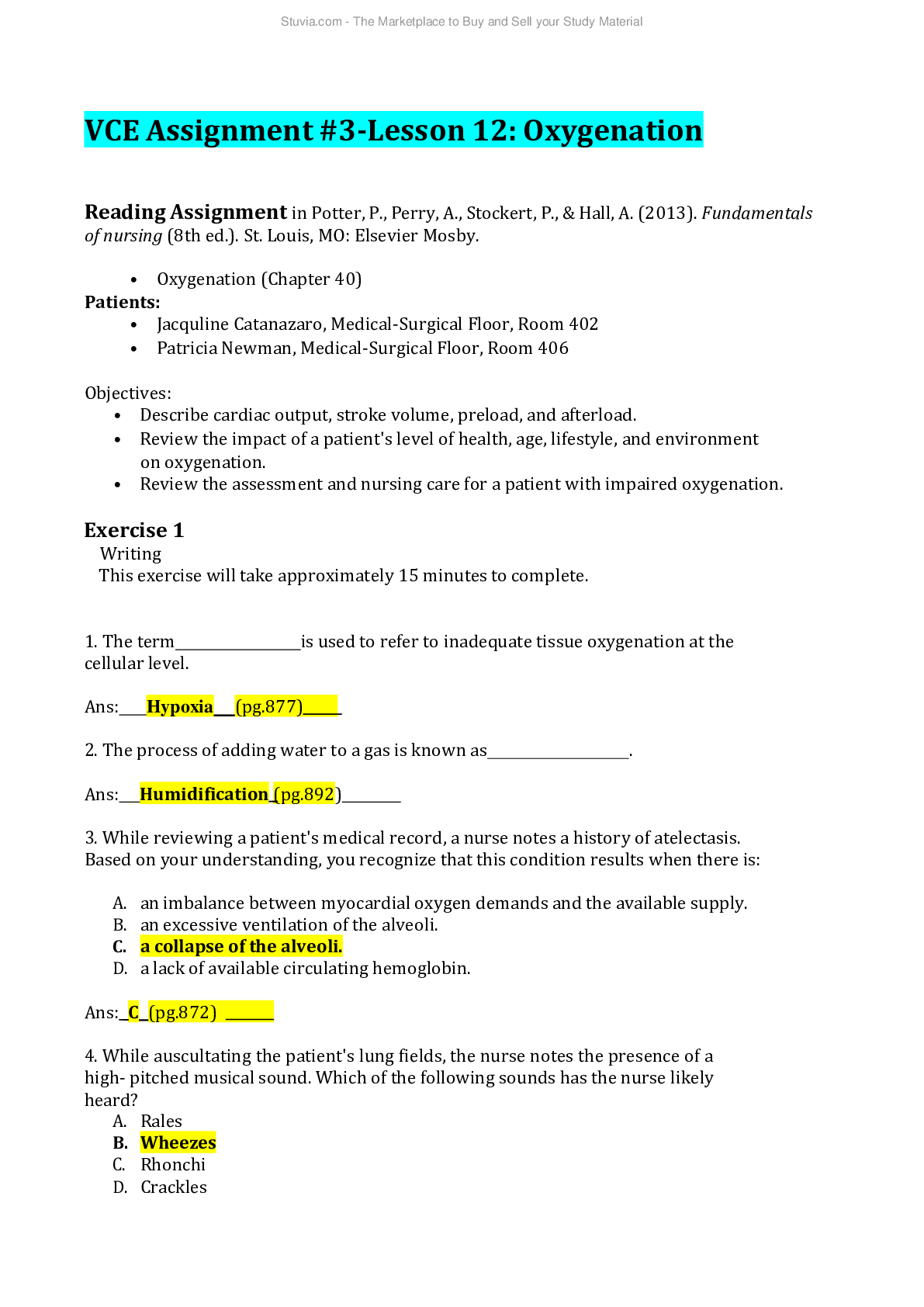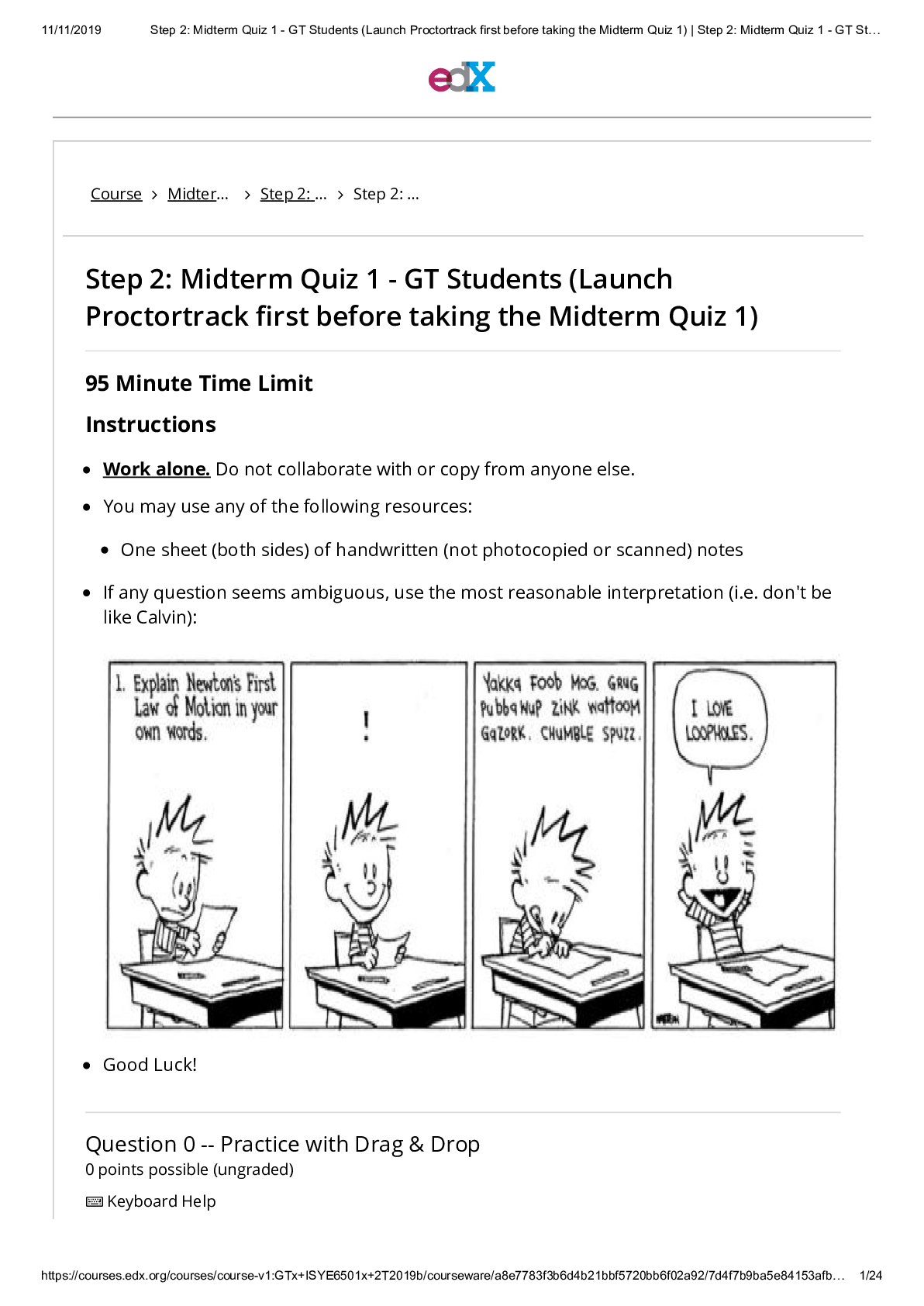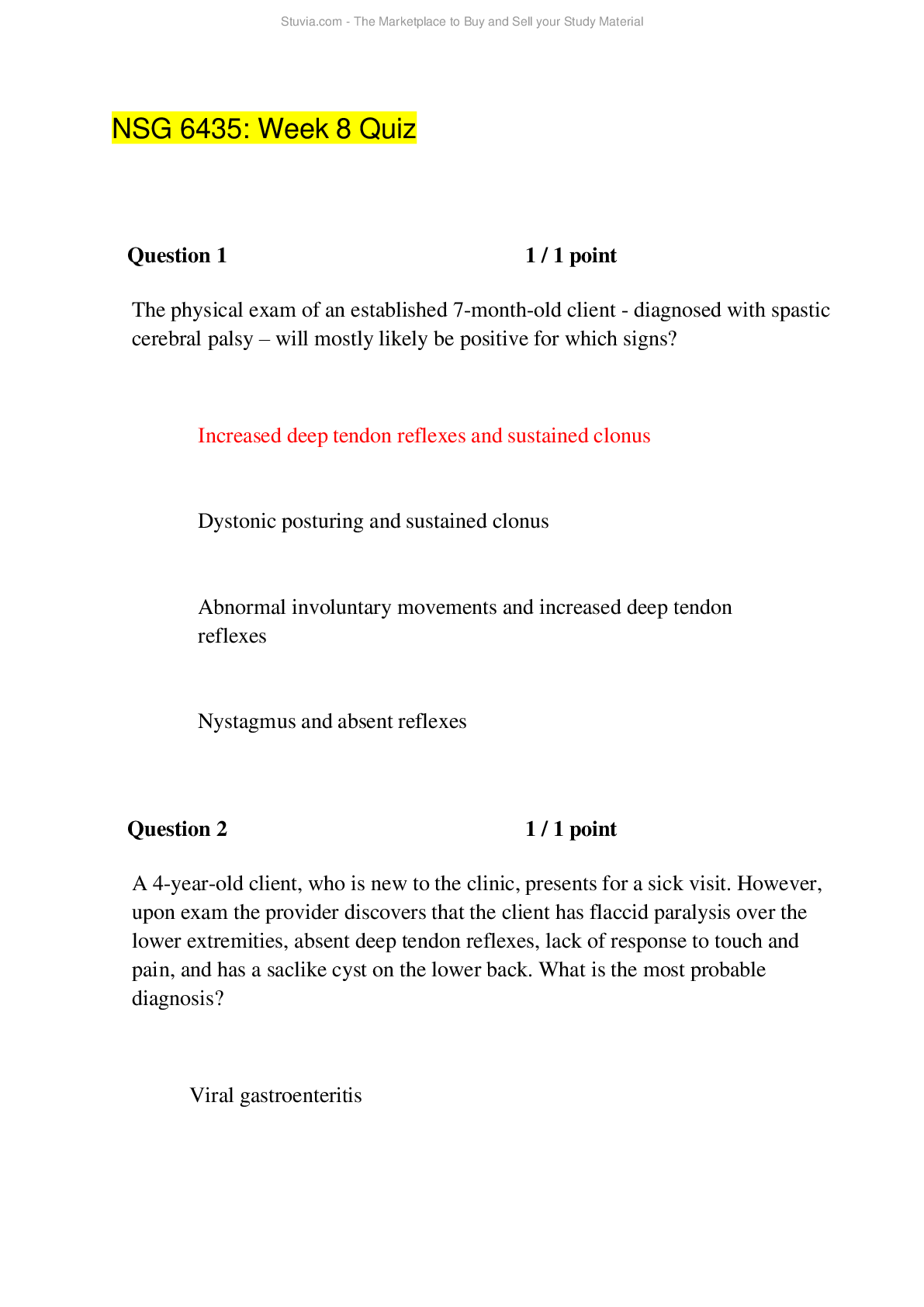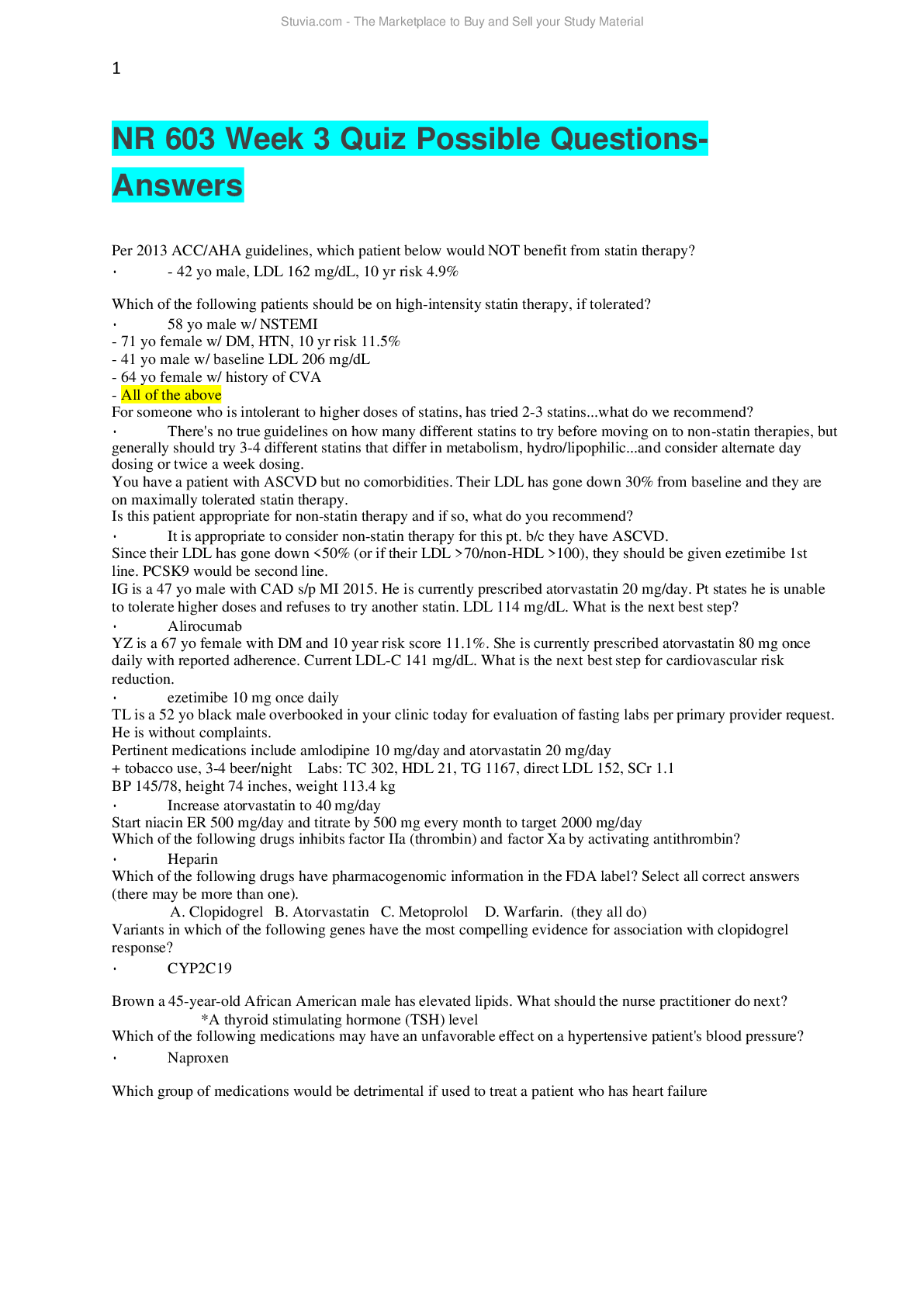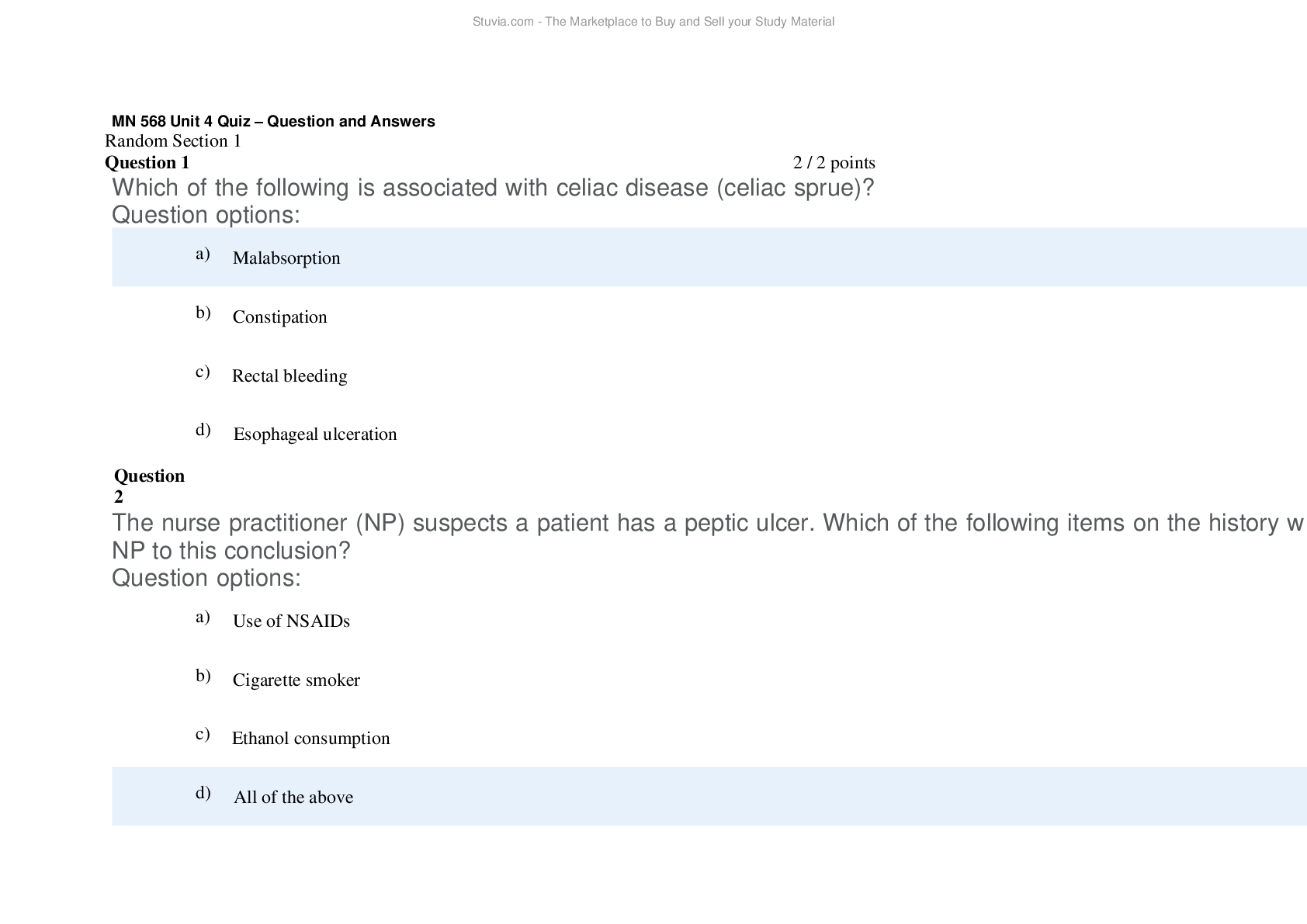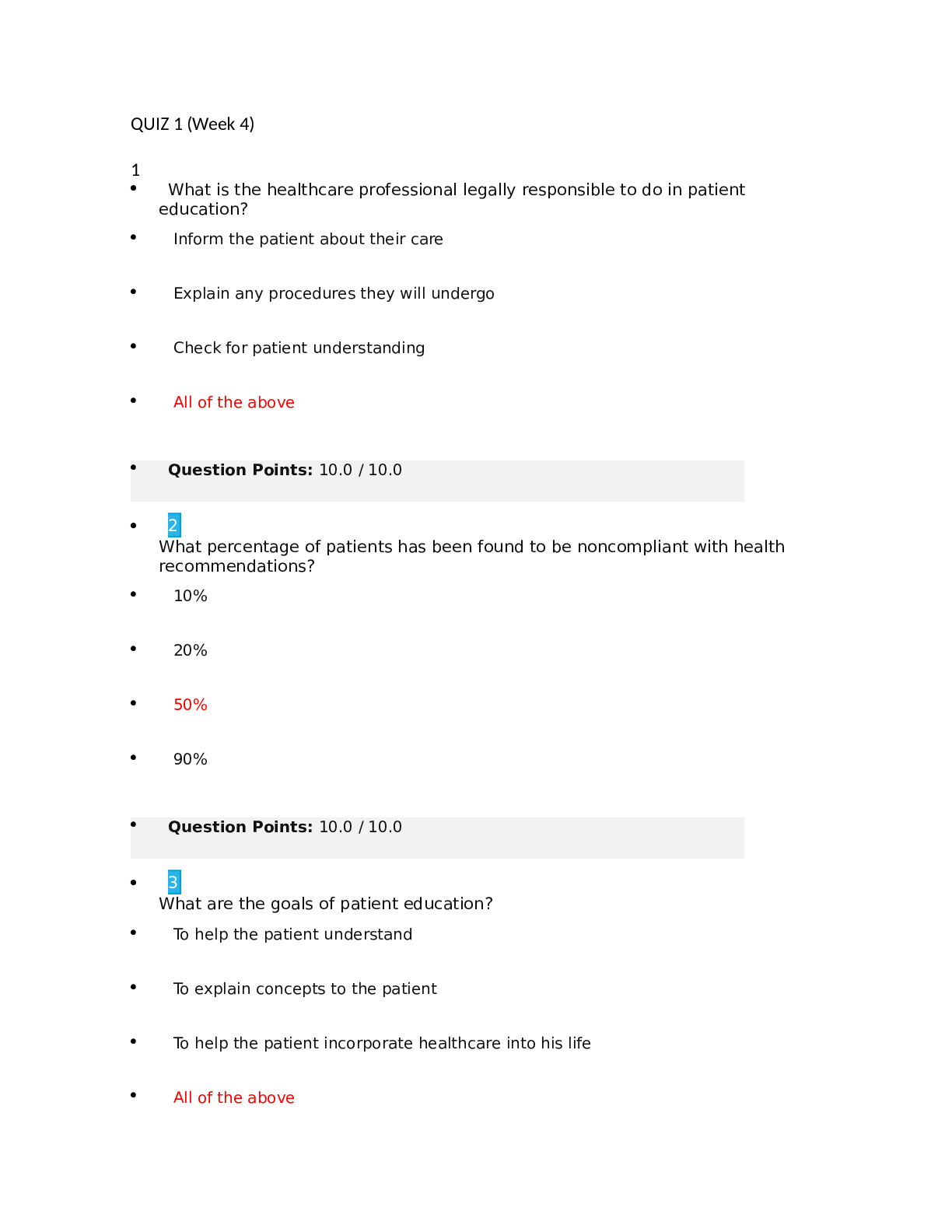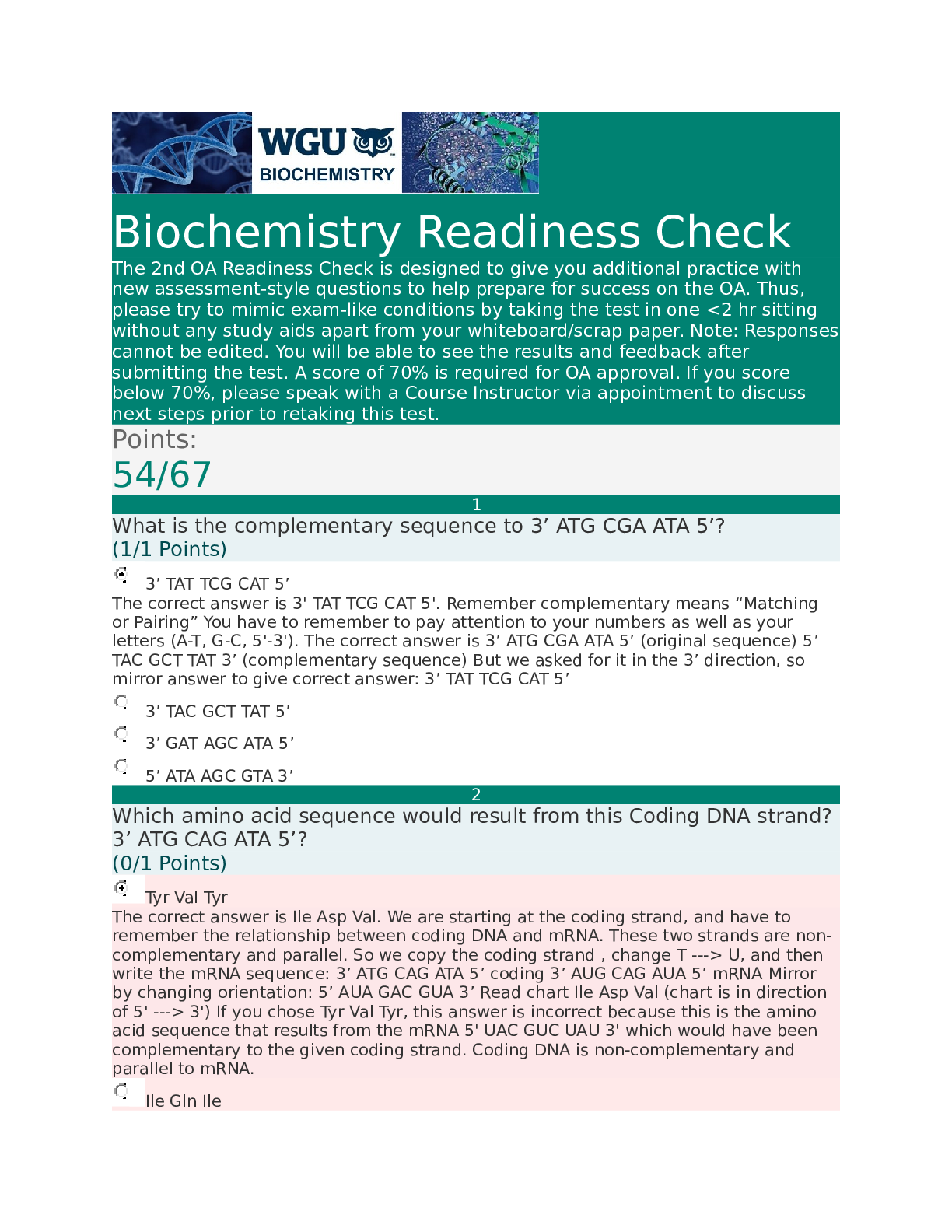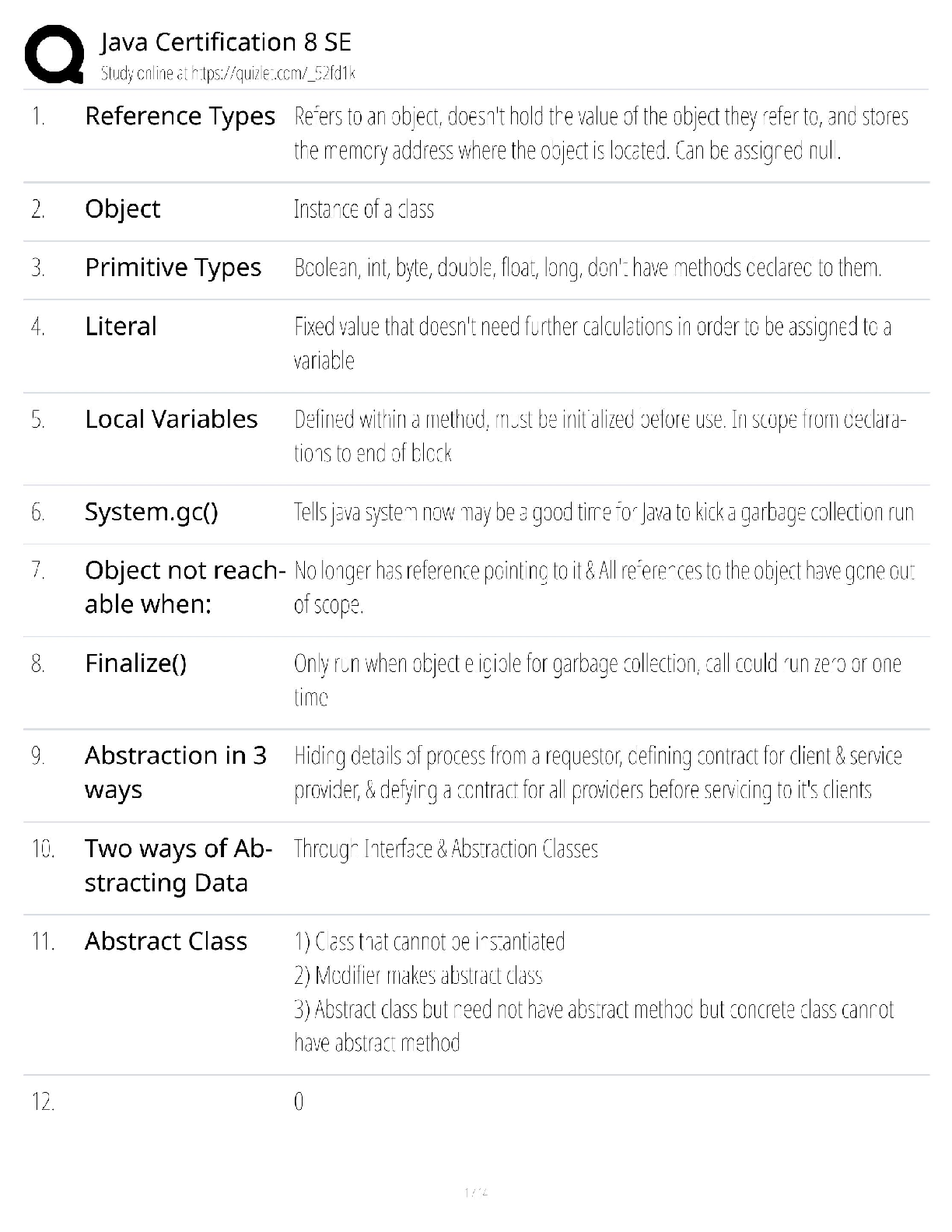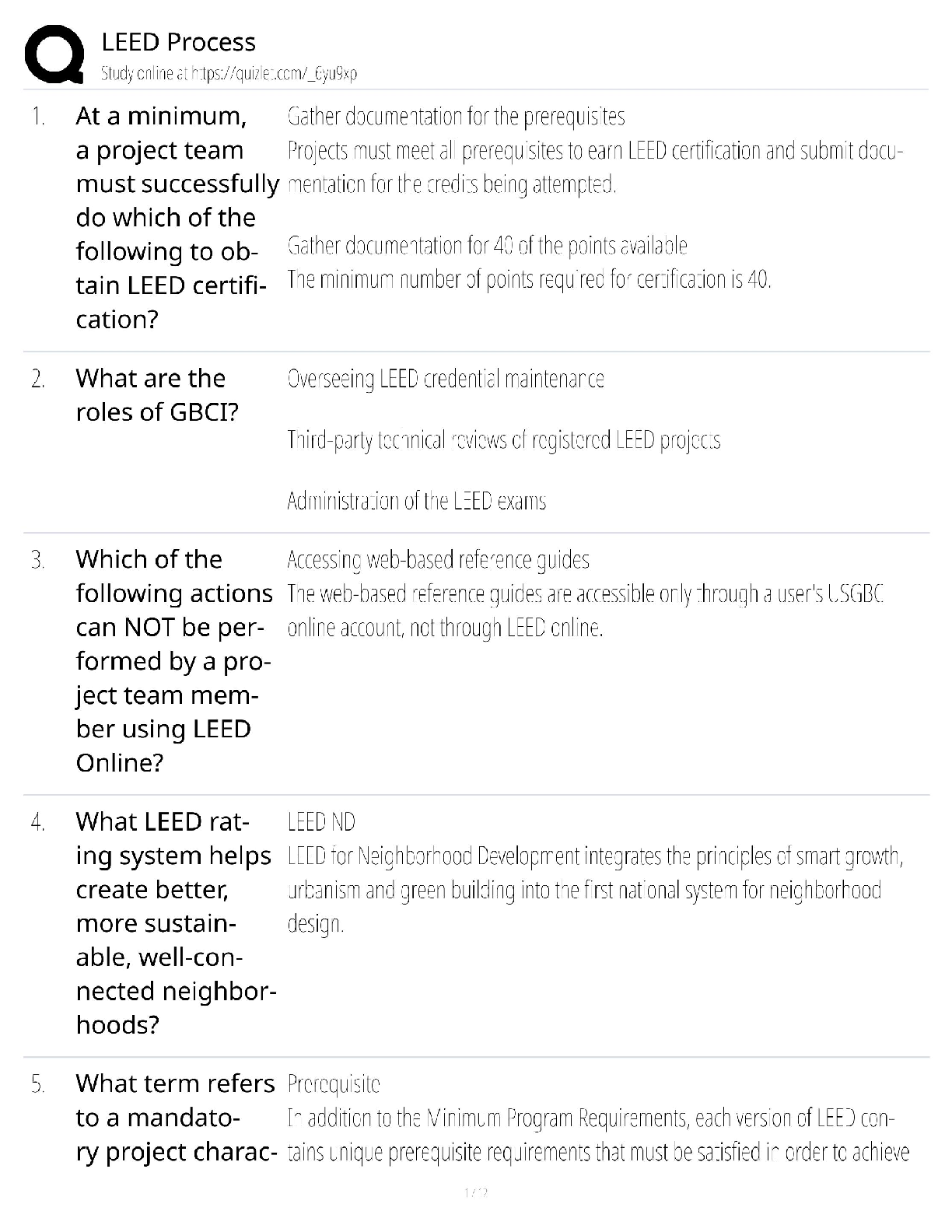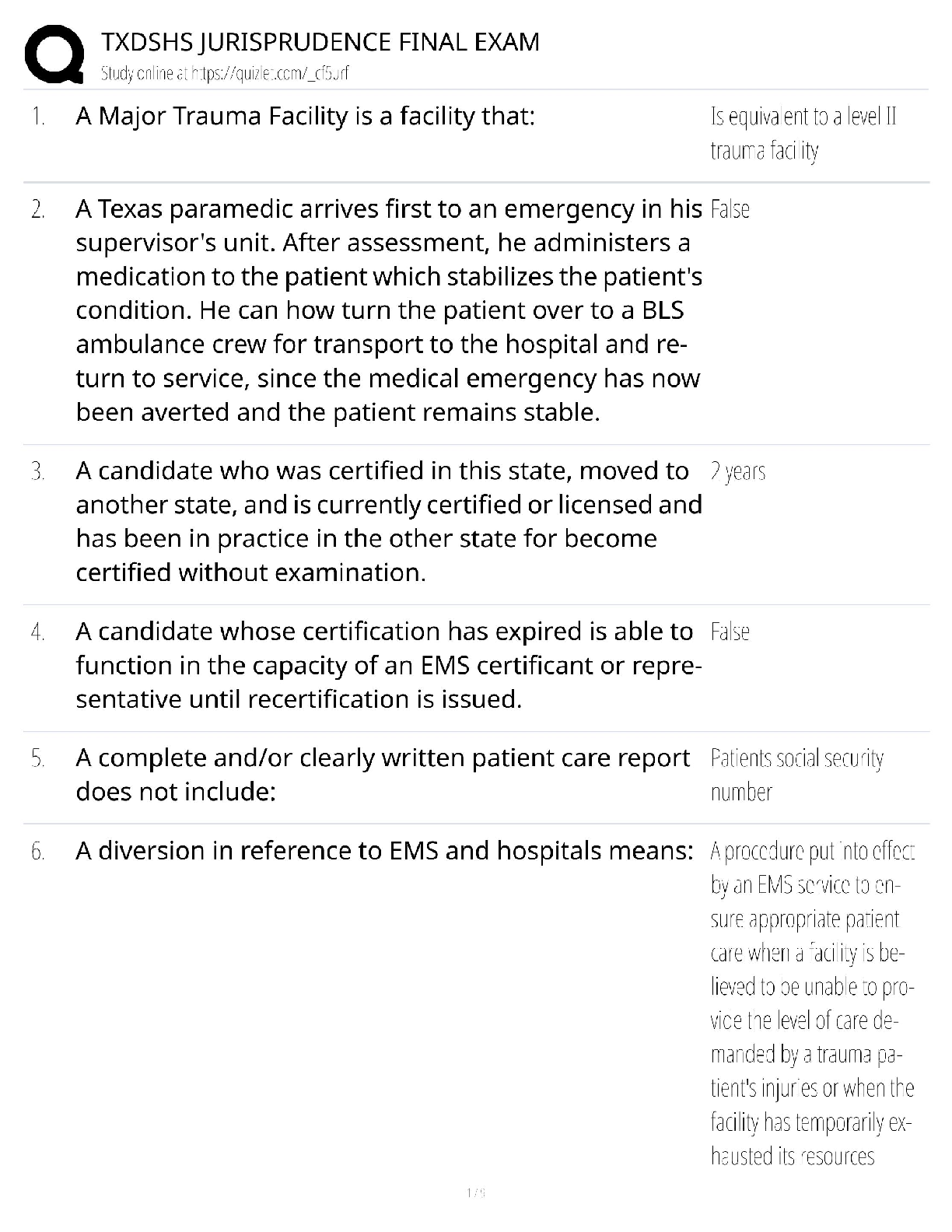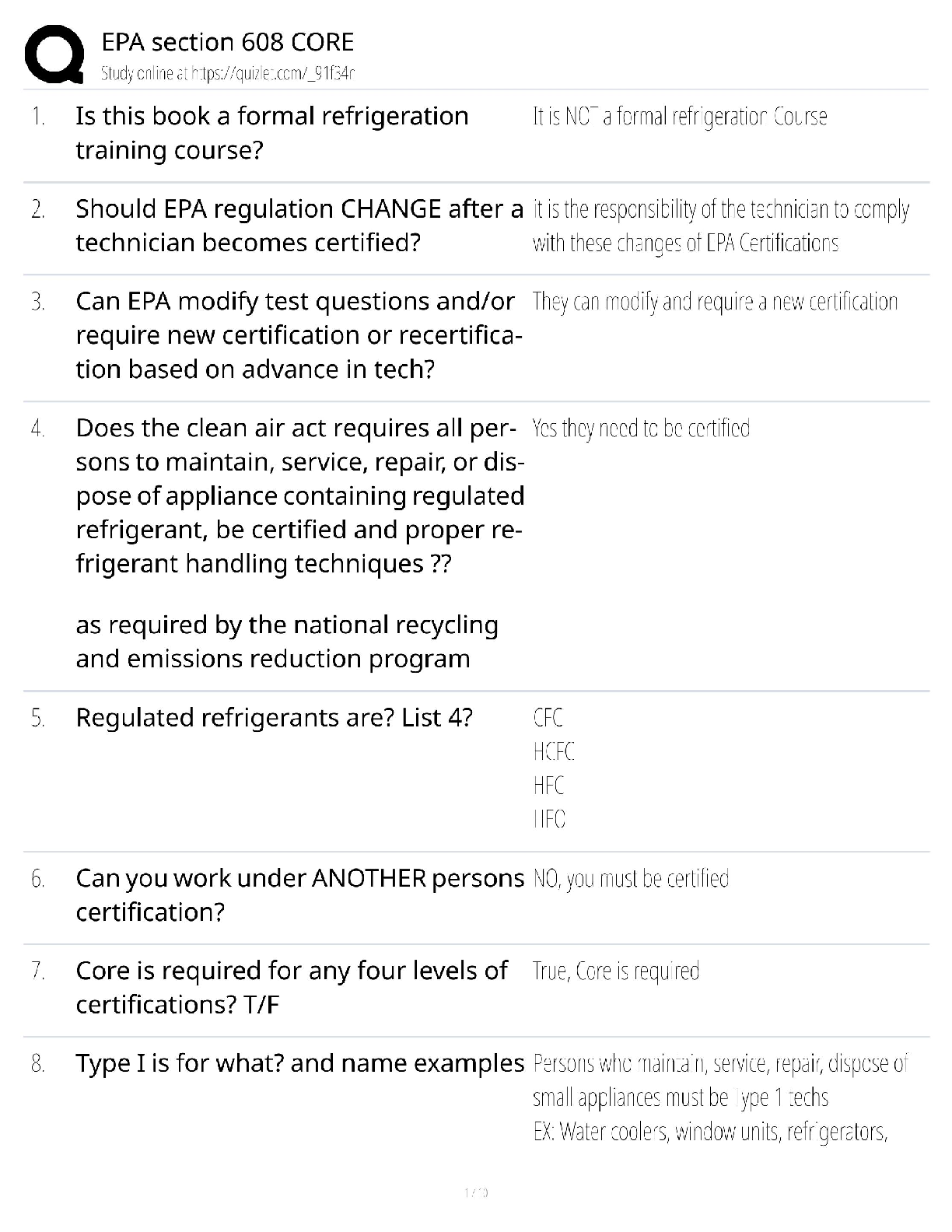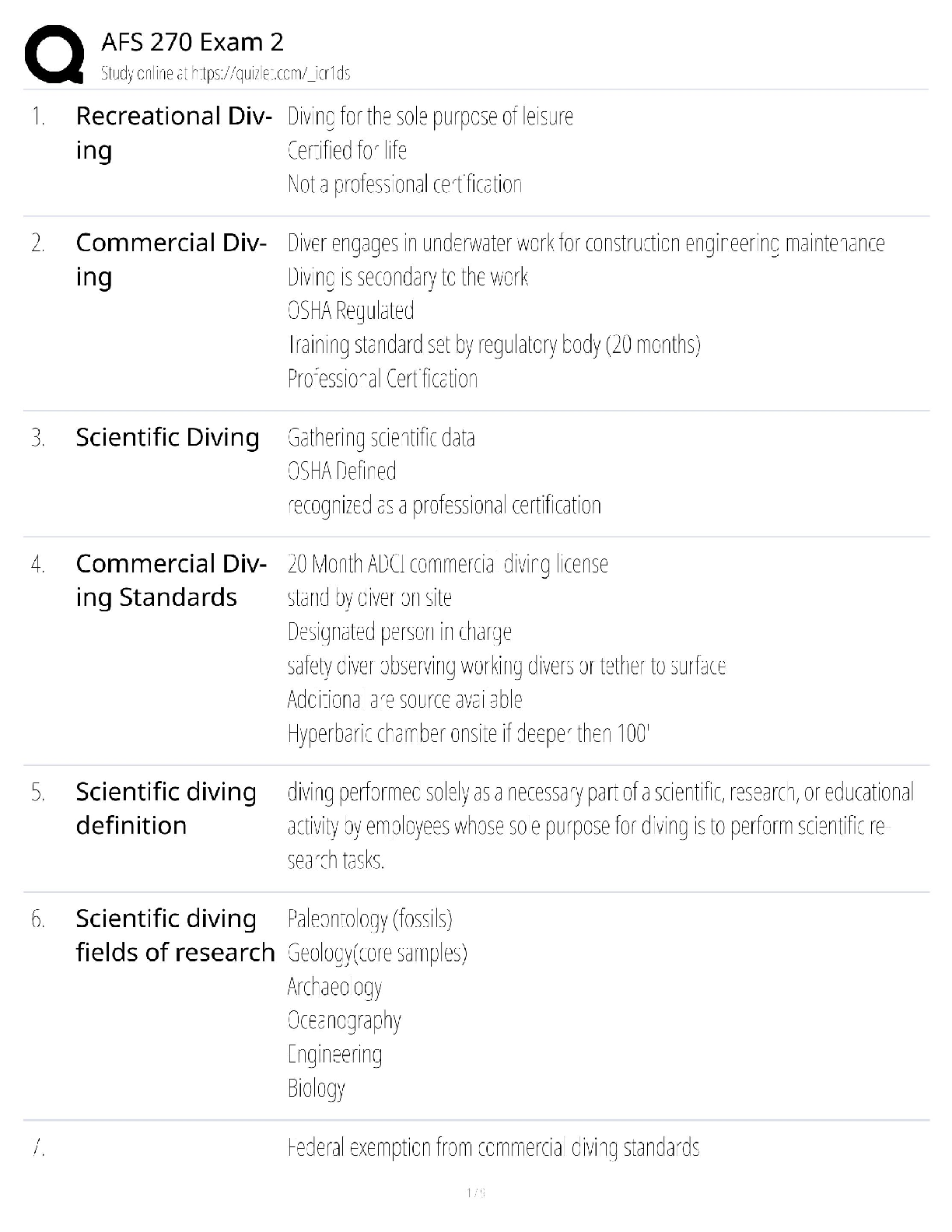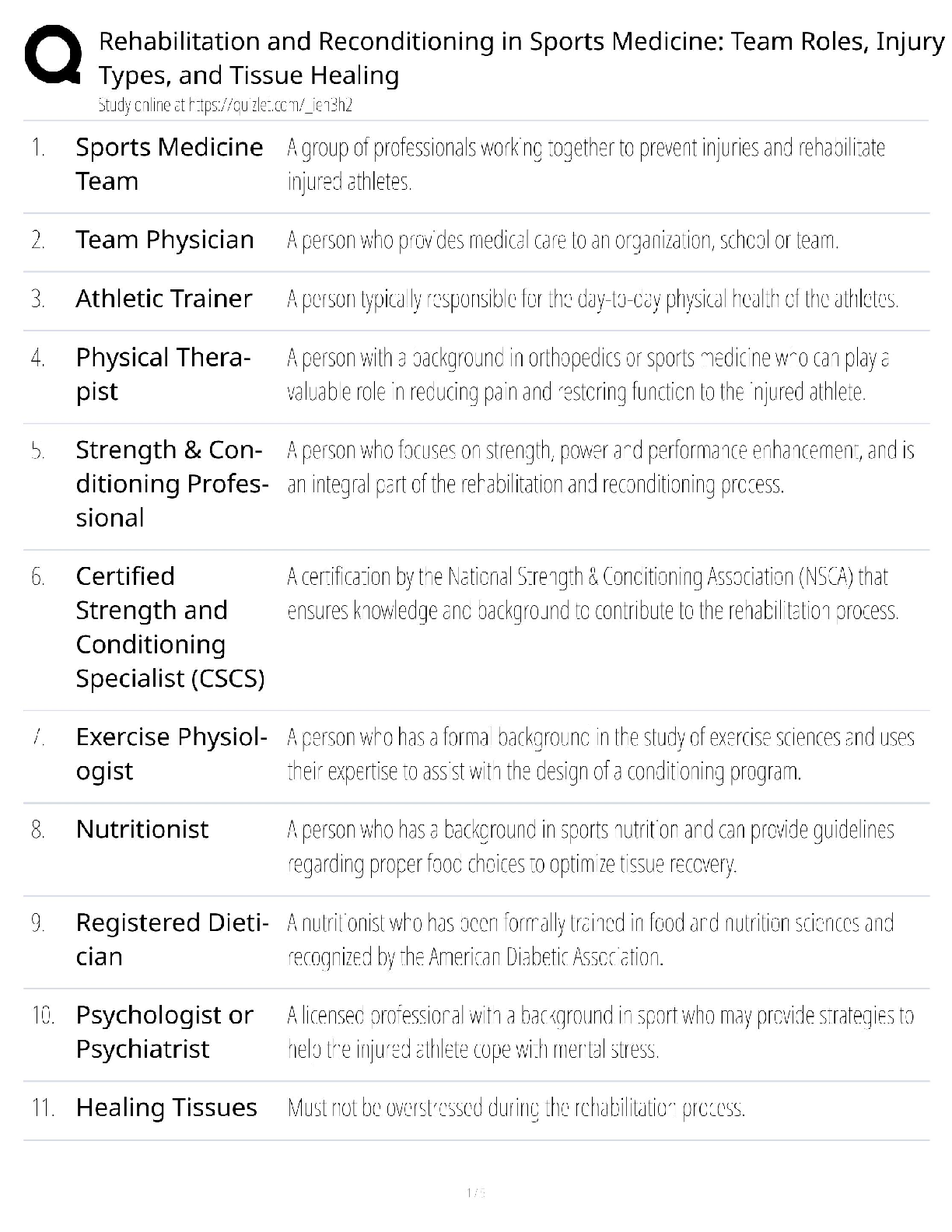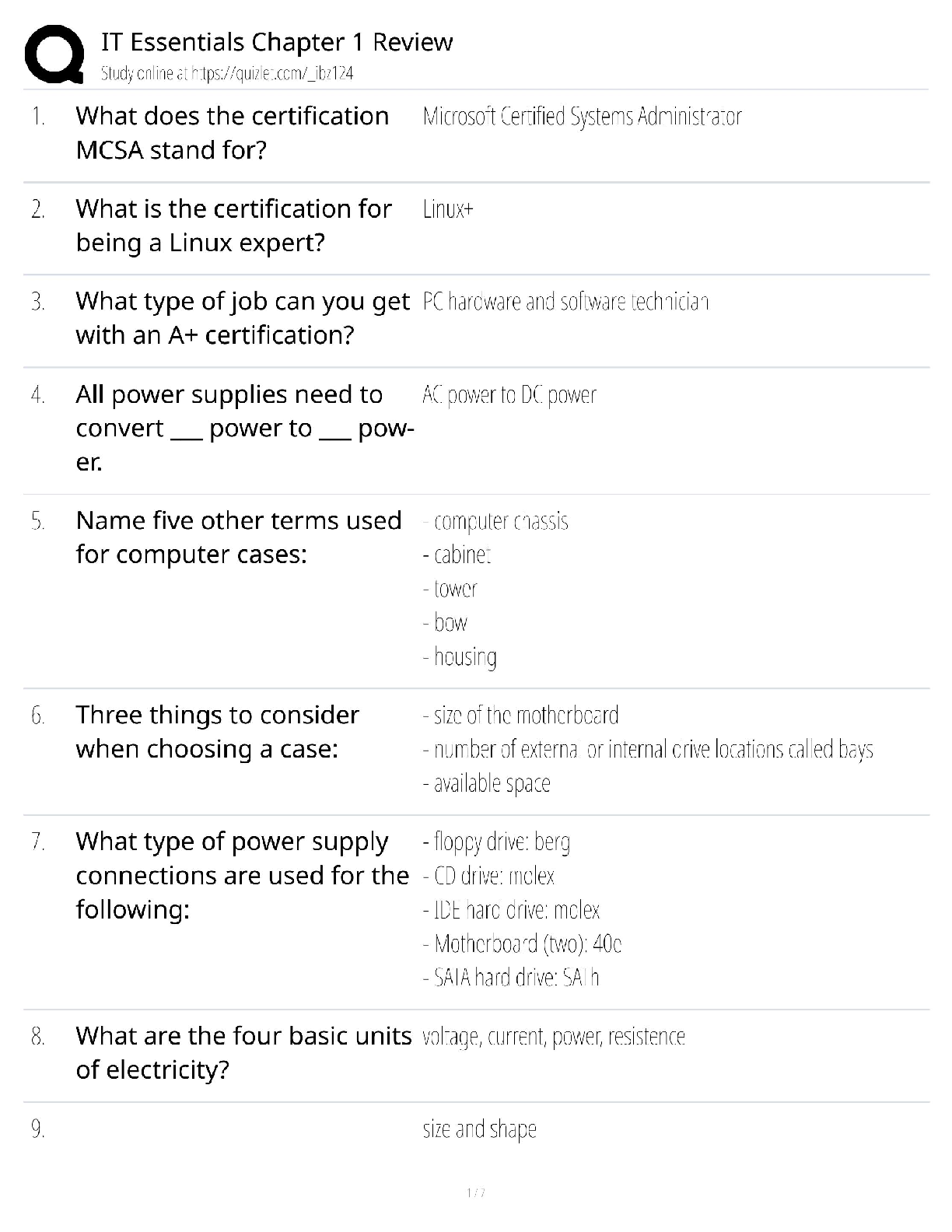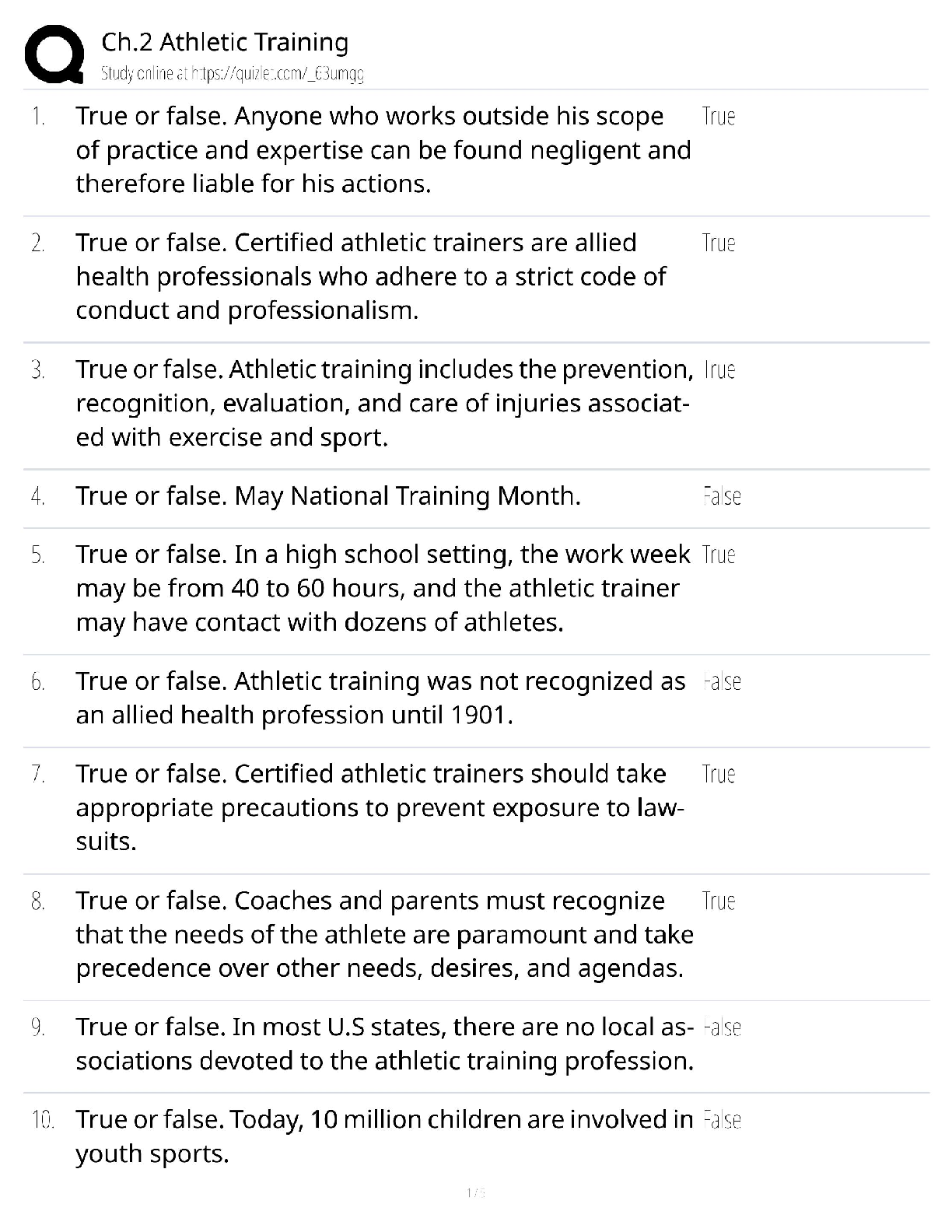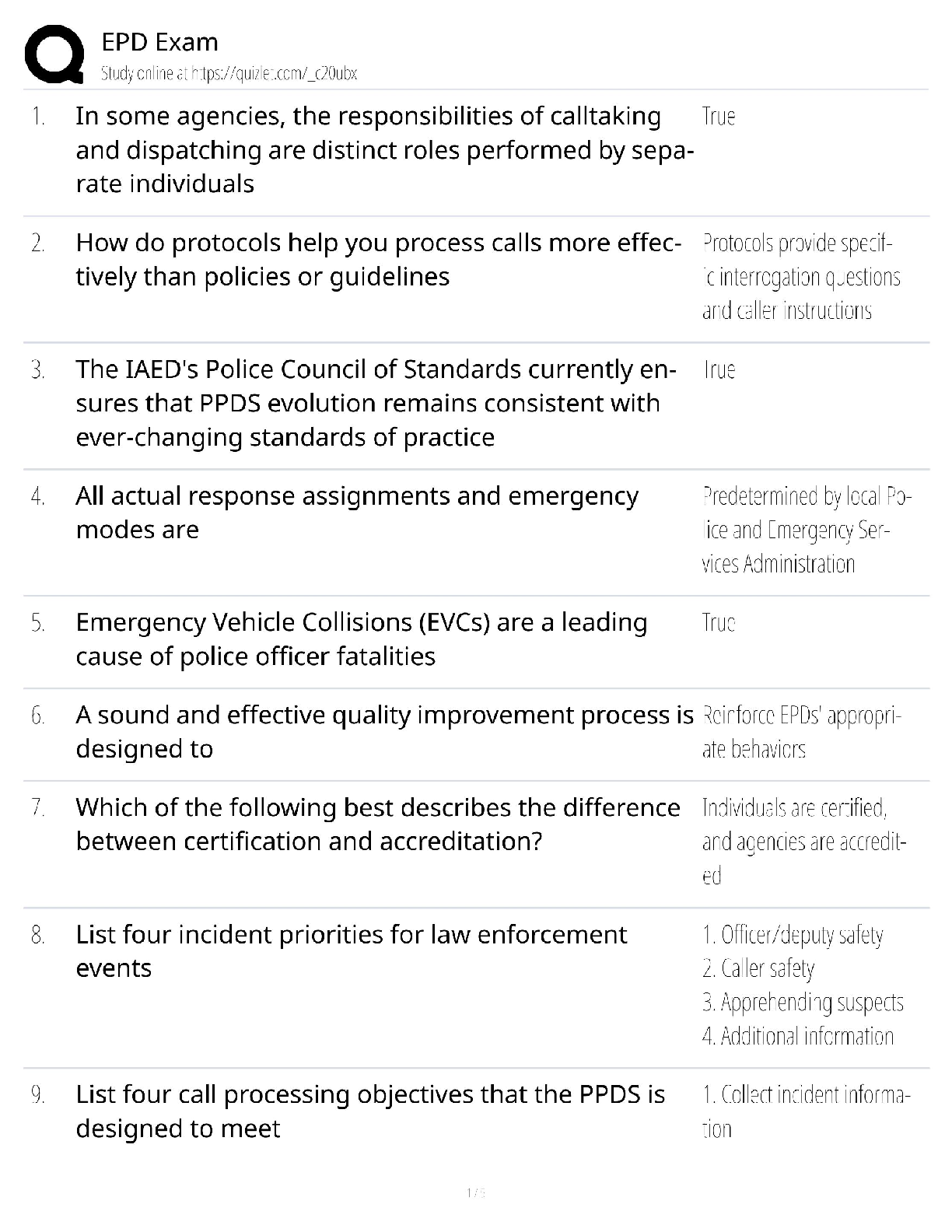*NURSING > QUESTIONS & ANSWERS > NURSING 306 quiz 4 Qs OB with complete solution (All)
NURSING 306 quiz 4 Qs OB with complete solution
Document Content and Description Below
Ch.15 1. The most critical physiological change required of neonates during the transition from intrauterine to extrauterine life is: 2. NB girl who weighs 3,800g w/an estimated gestational age of 41 ... weeks. Upon assessment at 1 hr of age, you note that the NB is jittery and irritable. First: 3. Heat loss through evaporation can be reduced by: 4. 4. The nurse would expect the stools of a 3-day-old breastfed newborn to be: 5. father seems concerned and asks why his baby girl is so hairy. The best response is: 6. Which measurements fall above/below the normal range for a NB born at 40 wks gestation? SATA 7. SATA: true regarding the anterior fontanel of a full term neonate. 8. The point of maximal impulse (PMI) is located at 9. Which of the following assessment data of a 12 hr neonate needs additional evaluation? SATA 10. The initial bathing of the neonate should occur Ch. 16 1. Teaching regarding the care of the newborn begins: 2. During a feeding session, your 19-year-old primipara, who is 12 hours post-birth, asks you how she can tell if her baby girl is getting any milk when nursing. Your best response is: 3. You are assigned to a 21-y.o primipara, who is 36 hrs post-birth & breastfeeding her healthy newborn son. Upon assessment, there is a small reddened area on the right side of the left areola. priority nursing action? 4. You are assigned a 16-year-old primipara, who is bottle feeding her healthy full-term baby boy. She asks you why the other nurse told her to tilt the baby’s bottle when feeding. best response is: 5. discharge teaching plan for your pt. The NB is a girl & is full term & healthy. Both have one other healthy child, a boy- 2 y.o. The woman bottle fed her son & plans to breastfeed her daughter. She plans to return to work when her daughter is 3 mo. the 3 primary learning needs for this couple are: 6. Contraindications for breastfeeding include which of the following? SATA . 7. Which of the following are true statements regarding let-down reflex? Select all that apply. 8. You observe that a 2-day postpartum woman is having difficulty breastfeeding. Her baby is crying and moving his head from side to side. Your first nursing action is to: . 9. Your discharge teaching for a couple with an uncircumcised boy should include which of the following? 10. The American Dental Association recommends that parents can decrease the risk of tooth decay in infants By: SATA A. 10. If a pregnant woman is (GBS) positive, prophylactic antibiotics should be administered if: Ch. 17 1. assess preterm baby w/a gestational age of 32 wks & birth weight of 1,389g poss indication of RDS? 2. Prim risk factor for necrotizing enterocolitis (NEC): 3. A common characteristic of a premature infant is: 4. gavage feeding a preterm neonate, the nurse should: 5. true regarding Hyperbilirubinemia? 6. Prevent (ROP) focus on targeting appropriate _ ranges for infants at risk. [Show More]
Last updated: 3 years ago
Preview 1 out of 2 pages
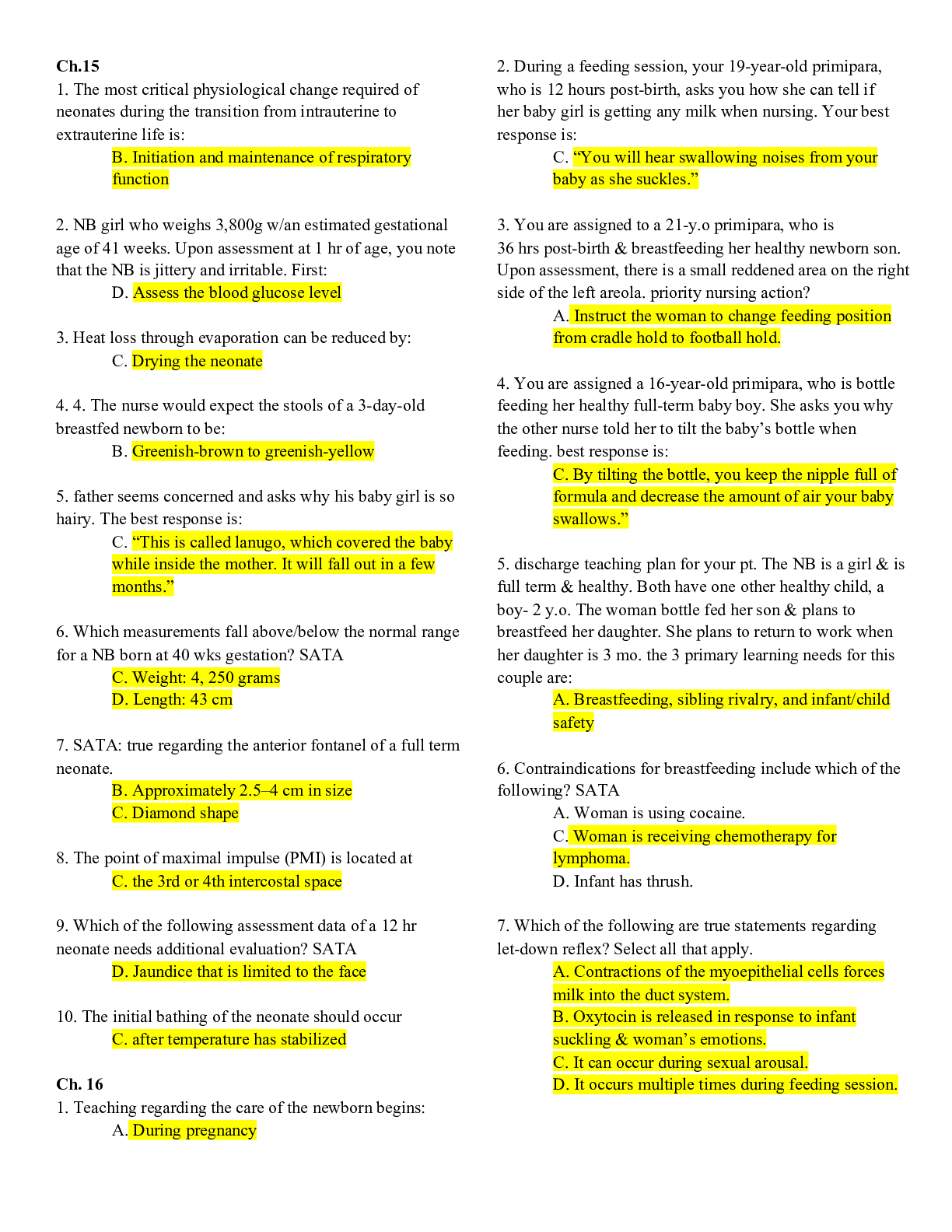
Buy this document to get the full access instantly
Instant Download Access after purchase
Buy NowInstant download
We Accept:

Reviews( 0 )
$6.00
Can't find what you want? Try our AI powered Search
Document information
Connected school, study & course
About the document
Uploaded On
May 24, 2021
Number of pages
2
Written in
All
Additional information
This document has been written for:
Uploaded
May 24, 2021
Downloads
0
Views
120

